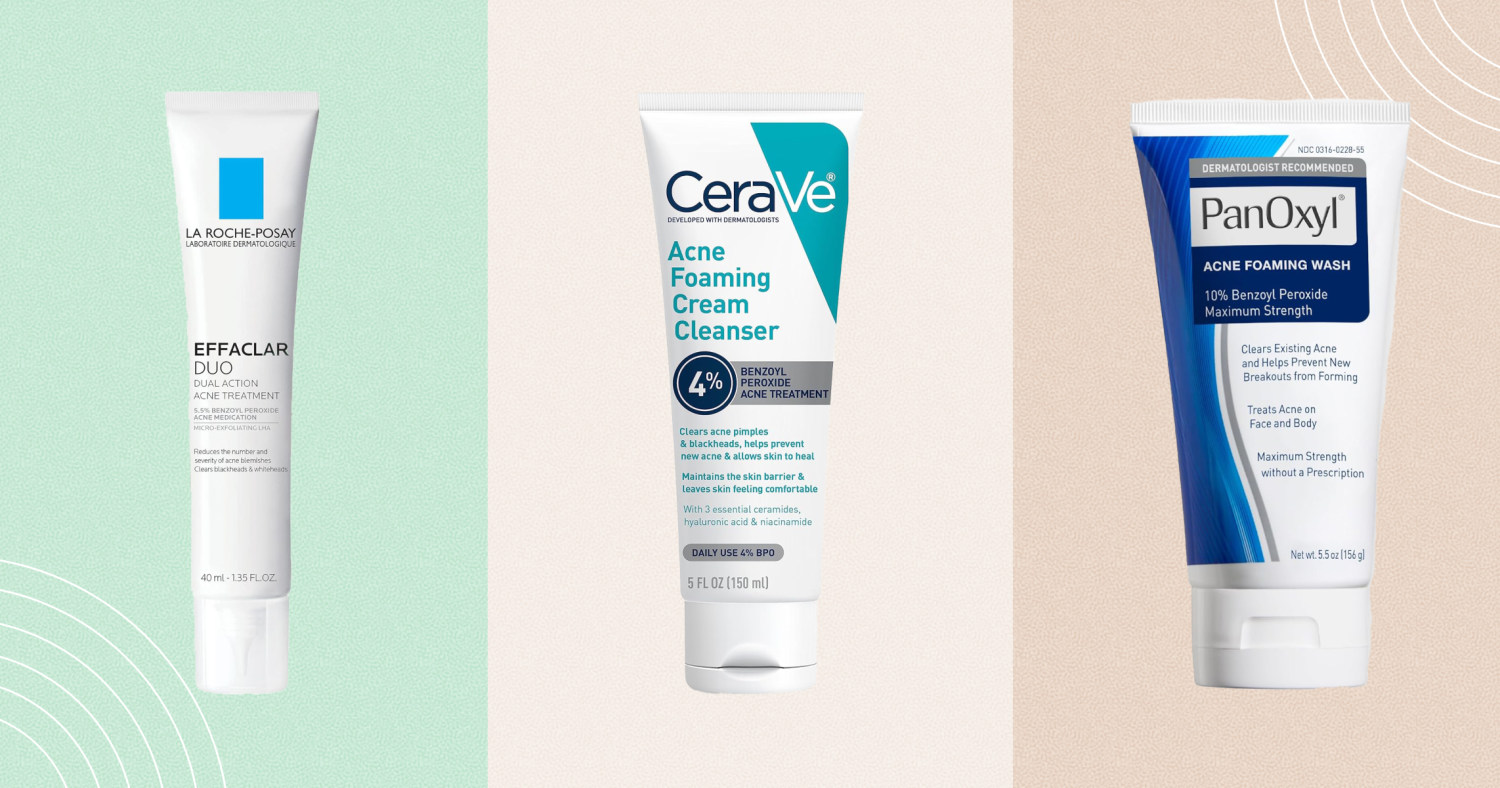
Benzoyl Peroxide is a popular ingredient in acne treatments, but what makes it so effective? Benzoyl Peroxide works by killing bacteria that cause acne, reducing inflammation, and helping to clear clogged pores. It’s available in various forms like gels, creams, and face washes, making it versatile for different skin types. However, it can cause dryness and irritation, so it's crucial to use it correctly. Did you know Benzoyl Peroxide can bleach fabrics? Always be careful with towels and pillowcases! Understanding how to use this powerful ingredient can make a huge difference in your skincare routine. Ready to learn more? Here are 36 facts about Benzoyl Peroxide that will help you get the most out of this acne-fighting hero.
What is Benzoyl Peroxide?
Benzoyl Peroxide is a popular ingredient in many acne treatments. Known for its effectiveness, it helps clear skin by killing bacteria and reducing inflammation. Here are some interesting facts about this powerful compound.
-
Chemical Composition: Benzoyl Peroxide is an organic compound with the formula (C?H?CO)?O?. It consists of two benzoyl groups connected by a peroxide link.
-
Antibacterial Properties: It works by releasing oxygen into the pores, which kills acne-causing bacteria. Bacteria cannot survive in an oxygen-rich environment.
-
Anti-Inflammatory Effects: Besides killing bacteria, it also reduces inflammation, helping to calm red, swollen acne lesions.
Uses of Benzoyl Peroxide
Benzoyl Peroxide is not just for acne. It has various applications in both medical and non-medical fields.
-
Acne Treatment: Most commonly used in gels, creams, and face washes to treat acne.
-
Teeth Whitening: Sometimes used in teeth whitening products due to its bleaching properties.
-
Hair Dye: Found in some hair dye formulations to help lighten hair.
How to Use Benzoyl Peroxide
Using Benzoyl Peroxide correctly can maximize its benefits and minimize side effects. Here are some tips for effective use.
-
Start Slowly: Begin with a lower concentration to see how your skin reacts. Gradually increase the concentration if needed.
-
Apply to Clean Skin: Always apply to clean, dry skin to ensure maximum absorption.
-
Moisturize: Benzoyl Peroxide can be drying. Use a good moisturizer to keep your skin hydrated.
Side Effects of Benzoyl Peroxide
While effective, Benzoyl Peroxide can have some side effects. Knowing these can help you manage them better.
-
Dryness: One of the most common side effects. It can make your skin feel tight and dry.
-
Redness: Some people experience redness and irritation, especially when first using it.
-
Peeling: The skin may start to peel as it adjusts to the treatment.
Interesting Facts About Benzoyl Peroxide
Here are some lesser-known facts that might surprise you.
-
First Used in the 1920s: It has been used in acne treatments since the 1920s.
-
FDA Approved: Benzoyl Peroxide is FDA-approved for over-the-counter acne treatments.
-
Not Just for Humans: Sometimes used in veterinary medicine to treat skin conditions in animals.
Benzoyl Peroxide in Popular Culture
Benzoyl Peroxide has even made its way into popular culture. Here are some fun facts.
-
Mentioned in Movies: It has been mentioned in several movies and TV shows as a go-to acne treatment.
-
Celebrity Endorsements: Many celebrities have endorsed products containing Benzoyl Peroxide.
-
Social Media: Frequently discussed in beauty and skincare communities online.
Environmental Impact
Understanding the environmental impact of Benzoyl Peroxide is crucial for sustainable use.
-
Biodegradable: Benzoyl Peroxide breaks down into benzoic acid and oxygen, which are less harmful to the environment.
-
Water Contamination: Overuse can lead to water contamination, affecting aquatic life.
-
Packaging Waste: The packaging of Benzoyl Peroxide products contributes to plastic waste.
Alternatives to Benzoyl Peroxide
If Benzoyl Peroxide isn't for you, there are alternatives. Here are some options.
-
Salicylic Acid: Another popular acne treatment that exfoliates the skin.
-
Tea Tree Oil: A natural alternative with antibacterial properties.
-
Retinoids: Effective for acne and anti-aging.
Myths About Benzoyl Peroxide
There are many myths surrounding Benzoyl Peroxide. Let's clear up some misconceptions.
-
Myth: It Causes Cancer: No scientific evidence supports this claim.
-
Myth: It Bleaches Skin: While it can bleach hair and fabrics, it does not bleach the skin.
-
Myth: It Works Overnight: It takes time to see results, usually a few weeks.
Benzoyl Peroxide and Sensitive Skin
People with sensitive skin need to be extra cautious. Here are some tips for them.
-
Patch Test: Always do a patch test before full application.
-
Lower Concentration: Use a lower concentration to minimize irritation.
-
Avoid Sun Exposure: Benzoyl Peroxide can make your skin more sensitive to the sun.
Benzoyl Peroxide in Combination Treatments
Combining Benzoyl Peroxide with other treatments can enhance its effectiveness.
-
With Antibiotics: Often combined with topical antibiotics for severe acne.
-
With Retinoids: Can be used with retinoids for a more comprehensive treatment.
-
With Moisturizers: Combining with moisturizers can help reduce dryness and irritation.
Storage and Shelf Life
Proper storage is essential for maintaining the effectiveness of Benzoyl Peroxide.
-
Cool, Dry Place: Store in a cool, dry place away from direct sunlight.
-
Check Expiry Date: Always check the expiry date before use. Expired products can be less effective.
-
Tightly Sealed: Keep the container tightly sealed to prevent oxidation.
Final Thoughts on Benzoyl Peroxide
Benzoyl peroxide is a powerhouse in acne treatment. It works by killing bacteria, reducing inflammation, and helping to clear blocked pores. Available in various forms like gels, creams, and cleansers, it suits different skin types and needs. While effective, it can cause dryness or irritation, so starting with a lower concentration is wise. Always follow up with a good moisturizer. Remember, consistency is key for best results. If over-the-counter options don't work, consult a dermatologist for stronger treatments. Benzoyl peroxide can bleach fabrics, so be cautious with towels and pillowcases. Overall, it's a reliable option for many struggling with acne. Give it a try, but listen to your skin and adjust as needed.
Was this page helpful?
Our commitment to delivering trustworthy and engaging content is at the heart of what we do. Each fact on our site is contributed by real users like you, bringing a wealth of diverse insights and information. To ensure the highest standards of accuracy and reliability, our dedicated editors meticulously review each submission. This process guarantees that the facts we share are not only fascinating but also credible. Trust in our commitment to quality and authenticity as you explore and learn with us.


